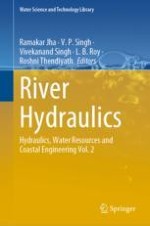This book presents key principles of the hydraulics of river basins, with a unique focus on the interplay between stream flows and sediment transport. Addressing a number of basic topics related to the hydraulics of river systems, above all it emphasizes applicative aspects in order to provide the reader with a solid grasp of river engineering. The understanding of the river hydraulics is essential for the assessment of optimum locations for the conservation of water resources and its structures.
This book will be interesting to readers and researchers working in the specialized area of river hydraulics of Ganga basin, Narmada, Tapi, Godavari, and other basins of India. It consists of review on hydraulics of meandering river; hydraulic design of reservoir in permeable pavement; optimization of hydraulic design; hydraulic investigations to optimize the design of spillway and design of energy dissipater; and analysis of performance of orifice spillway using computational fluid dynaics
